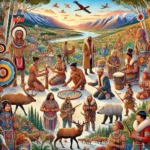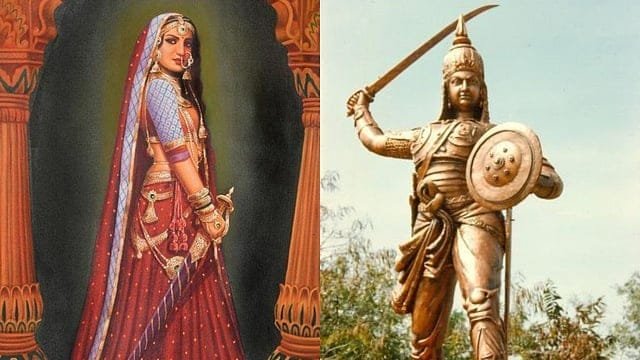The image is ubiquitous: a woman shrouded in a veil, her life and choices constrained by a patriarchal interpretation of faith. To much of the outside world, “Islamic culture” is synonymous with the suppression of women’s rights, a monolithic entity where female voice and agency are systematically silenced. This stereotype, repeated in global media and political discourse, paints a picture of universal female subordination. But this narrative is incomplete. To shatter this simplistic view, one must look to the Sahara Desert, to the indigenous Tuareg people—a devoutly Muslim society where the common script is flipped entirely. Here, it is the men who wear the veil, and a robust matriarchal system dictates social and economic life, proving that the relationship between Islam and women’s empowerment is not one of inherent opposition, but of fascinating and diverse cultural synthesis.
Who Are the Tuareg?
The Tuareg are a nomadic Berber ethnic confederation and one of the most iconic indigenous peoples of the Sahara Desert. They call themselves Kel Tamasheq (speakers of the Tamasheq language) or Imoshag (the free people). Renowned as fierce warriors, skilled traders, and expert guides, they have historically controlled the trans-Saharan caravan routes. Their most famous moniker, the “Blue People of the Sahara” (Hommes Bleus), comes from the indigo dye of their traditional garments, which often stains their skin.
Indigenous Homeland and Traditional Livelihood
Geography: The Tuareg homeland spans the modern borders of Niger, Mali, Algeria, Libya, and Burkina Faso. This vast desert territory is not just where they live; it is the core of their cultural and spiritual identity, shaped over millennia.
· Livelihood: Their traditional way of life is nomadic pastoralism. They herd goats, sheep, and, most importantly, camels, migrating across ancient routes to find pasture and water. They were also the masters of trans-Saharan trade, transporting salt, gold, ivory, and other goods between North Africa and sub-Saharan Africa.
The Tagelmust: The Male Veil
The most visible and fascinating aspect of Tuareg culture is the Tagelmust, the long, indigo-dyed cloth veil worn by men.
· Indigenous Origins: The practice predates Islam. Its roots are practical (protection from sun, wind, and sand) and spiritual (believed to ward off evil spirits).
· Integration with Islam: Upon adopting Islam, the Tuareg infused the Tagelmust with new meaning, interpreting it as a form of male modesty (haya) and respect. It is improper for a man to reveal his mouth to strangers or superiors.
· Cultural Significance: It is a powerful symbol of male identity. A boy receives his first veil around puberty or in his early twenties in a significant rite of passage into manhood.
Matriarchal Social Structure
Contrary to common perceptions of Islamic societies, the Tuareg maintain a strong matriarchal social structure, a hallmark of their indigenous Berber heritage.
· Matrilineal Descent: Lineage and inheritance are traced through the mother’s line.
· Economic Power of Women: Women own the family’s key assets: the highly decorated nomadic tent (ehan) and the livestock. In a divorce, these remain with the woman.
· Social and Romantic Freedom: Women do not traditionally veil their faces and enjoy significant freedom in choosing partners and initiating divorce.
· Guardians of Culture: Women were historically the literate gender, responsible for preserving and teaching the Tifinagh script. They are the primary poets, musicians, and custodians of Tuareg oral history and language.
Social Hierarchy
Tuareg society is traditionally hierarchical, though these lines are blurring today.
· Nobles (Imajeghen): The warrior and ruling class.
· Vassals (Imghad): Free pastoralists who herded for the nobles.
· Marabouts (Ineslemen): Islamic religious scholars and teachers.
· Artisans (Inadan): A respected caste of blacksmiths and jewelers crucial to material culture.
· Former Slaves (Iklan): Descendants of captured peoples.
Language and Script
· Language: Tamasheq (or Tamahaq), a Berber language of the Afro-Asiatic family.
· Script: Tifinagh, an ancient Berber script preserved by the Tuareg and often seen in their art and jewelry.
History, Challenges, and Modern Struggles
· Colonial Disruption: French colonial rule in the late 19th and early 20th centuries shattered their traditional way of life. Borders were imposed, trade routes were disrupted, and resistance was suppressed.
· Post-Colonial Marginalization: After independence, the new nations of Mali and Niger often politically and economically marginalized the Tuareg people.
· Rebellions: This marginalization led to a series of major Tuareg rebellions (1960s, 1990s, 2000s-2010s) seeking autonomy and recognition.
· Modern Threats:
· Climate Change: Severe droughts decimate herds, making pastoralism unsustainable.
· Forced Sedentarization: Many are forced to abandon nomadism and settle in cities, leading to cultural erosion.
· Poverty and Lack of Services: Their remote homelands lack schools, healthcare, and infrastructure.
· Conflict: The region has become a hotspot for trafficking and jihadist insurgencies, leading to military crackdowns and displacement.
A Unique Synthesis
The Tuareg people stand as a powerful example of the diversity within the Islamic world. They are a living synthesis of:
- Indigenous Identity: Their matriarchal norms, Tifinagh script, and veiling tradition are deep-rooted aspects of their pre-Berber heritage.
- Islamic Faith: They are devout Muslims who pray, fast, and follow core tenets of Islam, which they have harmonized with their indigenous culture.
Their society challenges the monolithic view that Islam is universally patriarchal and oppressive to women. Instead, the Tuareg show that Islam is not a cultural eraser. It can be integrated into a deep-rooted indigenous framework that empowers women and maintains unique traditions. In a world of stereotypes, the Tuareg remain a testament to the fact that faith and female empowerment can coexist, and that cultural identity, even when faced with immense modern challenges, can endure for centuries.












